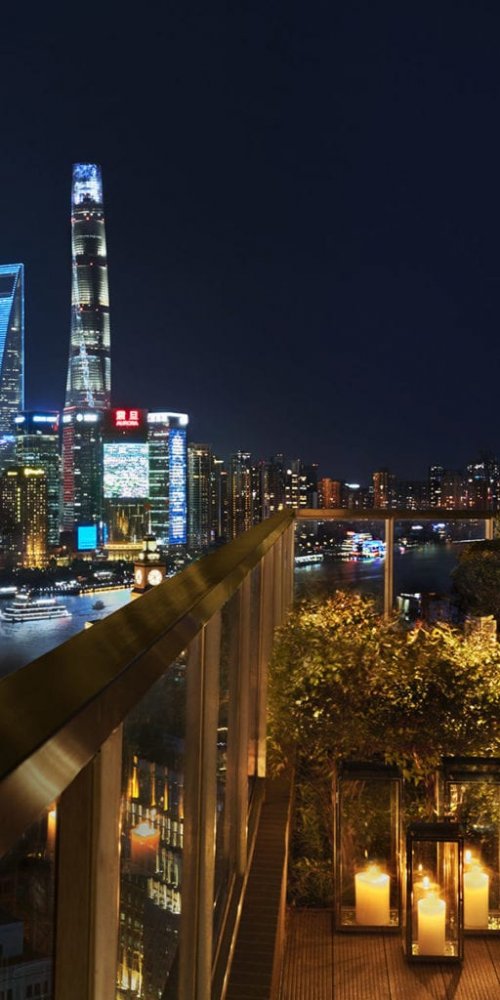

The city pulses around you: ticket barriers beep rhythmically as commuters swipe their cards, tram bells chime softly through the air, and voices swirl in a vibrant mix of Mandarin, English, Shanghainese, and more. Buses rumble past in synchronised dance, while bicycles whir by on sunlit lanes. You’re surrounded by the hum and heartbeat of Shanghai’s sprawling public transport network - a living, breathing conduit that connects 25 million people daily. As the scent of street food mingles with the cool metro breeze, you can almost taste the city’s energy and endless possibility. Ready to dive in and explore this metropolis with ease? Here’s your ultimate insider’s guide to mastering public transport in Shanghai, CN.

When you first arrived in Shanghai, the city’s vastness and frenetic pace might have seemed overwhelming. But slipping onto a metro train, the hushed hum replacing the street buzz, quickly showed you the efficiency and economy of public transport here. Shanghai’s network is not just affordable - starting at just ¥3 for a single journey - it’s often faster and more reliable than taxis, especially during rush hour. Compared to driving or ride-hailing, the metro, buses, and trams cut through traffic snarls like a scalpel slicing silk.
Environmentally, public transport is a smart choice. Shanghai has invested heavily in electric buses, trams, and clean energy-powered metro lines, reducing the city’s carbon footprint dramatically. While you glide from station to station, you’re helping lower pollution and traffic congestion.
Plus, the sense of community and local flavour you gain by riding together with Shanghai’s residents is unbeatable. Every beep of the ticket gate, every announcement in multiple dialects, is a vivid thread in the urban tapestry you are now part of. So whether your day involves historic temples or futuristic skyscrapers, public transport is your passport to explore Shanghai sustainably, swiftly, and stress-free.
| Mode | Lines | Peak Frequency | Night Service |
|---|---|---|---|
| Metro | 19 | Every 2-4 mins | Limited (up to 11 pm) |
| Tram | 2 | Every 10-12 mins | No |
| Bus | 130+ | Every 5-15 mins | Selected routes |
| Ferry | 5 Cross-river Lines | Every 20-30 mins | No |
| Bike-share | Thousands of bikes citywide | N/A | 24/7 |
Shanghai’s transport system combines speed and coverage. The metro forms the backbone, zipping you beneath the city’s diverse districts with frequency that makes waiting rare. Tram routes supplement by linking quieter inner suburbs, while buses fill gaps in coverage, especially in older neighbourhoods. Ferries offer a charming and scenic alternative for crossing the Huangpu River. Not to forget bikes - the ultimate last-mile solution, perfect for sunny afternoons or short connections. Together, these layers create an integrated web ready to whisk you anywhere in this sprawling urban giant.
Getting around Shanghai at rush hour is a dance of patience and timing. Peak periods - weekday mornings from 7:00 to 9:30 am and evenings from 5:00 to 7:30 pm - see metro cars packed with commuters and buses arriving at full capacity. Don’t be surprised to stand tightly packed but share smiles and snippets of conversation in multiple languages. Planning ahead is your best ally here.
Off-peak travel, especially mid-morning and late evenings, offers more breathing space. You can appreciate the sleek interiors of metro trains, enjoy window seats by the Huangpu River ferry, or cycle comfortably without traffic stress. Feeling adventurous? Night buses and some tram lines run much later, though check schedules closely.
Tactically, avoid Central Station during rush hour to sidestep bottlenecks. Use apps with live crowd updates, and tap into the city's superb bike-share system for short hops. Remember, fewer crowds mean better photos, too!
Best of all: your contactless card daily cap still applies regardless of time, meaning you save more when spreading trips across the day.

Nearly all metro stations boast step-free access with elevators and ramps; tactile paths guide visually impaired travellers. Trams and many buses have low floors for easy boarding but always check ahead for any service discrepancies.
Friendly policies allow prams on all metros and buses, though peak times can be crowded. Fold your pram aboard trams and ferries if space is tight.
Shanghai’s metro lines connecting to Pudong and Hongqiao airports feature dedicated luggage areas. Avoid rush hour for an easier ride with bulky bags, and inquire about priority boarding zones.
A1: Most buses accept payment on board via contactless cards or QR codes. Some require exact cash, so keep small change handy for certain routes.
A2: Unlimited passes cover metro, bus, and tram lines within their validity. Ferries and bike-shares generally require separate tickets or payments.
A3: Yes, it’s safe but note metro hours end around 11 pm. Night buses serve some routes, but take care and plan ahead.
A4: Use airport-friendly metro lines with special luggage compartments, avoid peak hours, and consider taxis for door-to-door convenience.
Your journey mastering public transport in Shanghai, CN, is just beginning. Whether darting through sleek metro tunnels or enjoying a peaceful ferry crossing, this network opens doors to the city’s soul. Have questions or tips from your travels? Share them below! Don’t forget to subscribe to our newsletter for the latest travel insights and updates.

Additional articles from our network with useful insights about Shanghai.